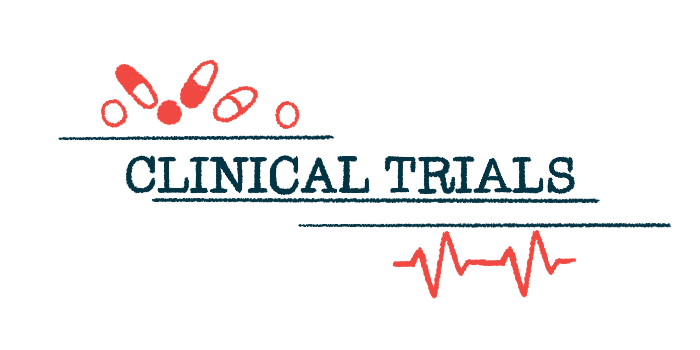Relacorilant delays ovarian cancer disease progression: Trial data
Add-on treatment extends survival in platinum-resistant disease

Relacorilant lowered the risk of disease progression and death by about 30% when used on top of standard chemotherapy in people with platinum-resistant ovarian cancer.
That’s according to results from the Phase 3 ROSELLA clinical trial (NCT05257408), presented at the American Society of Clinical Oncology annual meeting, held May 29-June 2 in Chicago, and simultaneously published in The Lancet in a study titled, “Relacorilant and nab-paclitaxel in patients with platinum-resistant ovarian cancer (ROSELLA): an open-label, randomised, controlled, phase 3 trial.”
“These data show that treatment with relacorilant can help patients with platinum-resistant ovarian cancer live longer, without adding to their safety burden,” Bill Guyer, chief development officer of Corcept Therapeutics, the treatment’s developer, said in a company press release. “We plan to bring this treatment option to patients as quickly as possible and are working on our regulatory applications in the U.S. and Europe.”
Corcept has launched an open-label Phase 2 trial called BELLA (NCT06906341) that’s testing the effects of relacorilant when combined with the chemotherapy agent nab-paclitaxel and the antibody-based therapy bevacizumab. The trial is recruiting about 90 adults with recurrent, platinum-resistant ovarian cancer at sites in the U.S.
The company is “considering additional clinical trials,” Guyer said.
Few choices for resistant disease
First-line treatment for ovarian cancer, a form of gynecological cancer, commonly involves platinum-based chemotherapy drugs. But in some cases, ovarian cancer is resistant to these medications.
“For many patients with advanced, recurrent ovarian cancer, the tumor eventually becomes resistant to chemotherapy, and oncologists have few good treatment options,” said Alexander B. Olawaiye, MD, director of gynecological cancer research at Magee-Women’s Hospital of the University of Pittsburgh and principal investigator for ROSELLA.
Signaling of the naturally occurring stress hormone cortisol can help cancers resist chemotherapy, leading to a worse prognosis. Ovarian cancer cells express glucocorticoid receptors — a protein through which cortisol exerts its effects — on their surface.
Relacorilant is an oral medication designed to block glucocorticoid receptors, and is therefore expected to increase sensitivity to chemotherapy and make treatment more effective.
The company is also studying relacorilant as a possible treatment for prostate cancer and Cushing’s syndrome, a condition characterized by excess cortisol levels.
ROSELLA enrolled 381 adults with platinum-resistant ovarian cancer who had received one to three previous lines of therapy and had experienced disease progression or couldn’t tolerate the most recent treatment. They were assigned to receive nab-paclitaxel, with or without relacorilant.
ROSELLA’s main goals were to evaluate the impact of relacorilant on overall survival and progression-free survival (PFS) — the time spent alive without cancer growth —with a positive outcome achieved when either endpoint is met.
The trial met its main goal, with the median PFS, as assessed by a blinded independent review committee, significantly longer in people given relacorilant than in those on chemotherapy alone (6.5 months vs. 5.5 months), amounting to a 30% lower risk of disease progression.
Planned interim analyses of overall survival showed that survival was longer with the combination therapy than with chemotherapy alone (16 months vs. 11.5 months), with relacorilant reducing the risk of death by 31%. After a year, 60% of people in the combination group were alive, compared with 49% in the chemotherapy-only group.
The benefits of treatment were seen across key patient subgroups, including when separated by age, previous lines of therapy, and other prognostic indicators.
While the objective treatment response rate (the percentage of people whose tumors shrank or disappeared) was similar in people who were or were not on relacorilant (36.9% vs. 30.1%), the clinical benefit rate (the proportion of people with disease stabilizations or improvements) was significantly higher with relacorilant (51.1% vs. 38.9%).
The treatment combination was well tolerated, with the most common side effects being “well known adverse events for nab-paclitaxel” that are “easy to monitor and manage, and reversible,” the researchers wrote.
People given relacorilant had a lower incidence of ascites, or fluid buildup in the abdominal cavity than those given chemotherapy alone (5.3% vs. 10.5%), and fewer people on relacorilant had paracenteses, a procedure to drain excess abdominal fluid (7.4% vs. 13.2%) .
“Relacorilant plus nab-paclitaxel may provide a powerful tool for improving progression-free and overall survival in patients with this disease,” Olawaiye said, noting that the data “support this regimen becoming a new standard-of-care treatment.”







